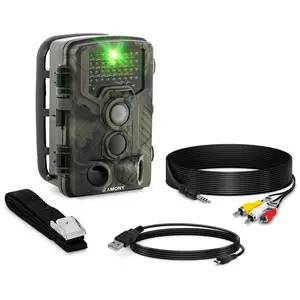BLACK FRIDAY ENDS IN
Telescopes
- First
- 1
- Last
Are you magically attracted to star clusters, galaxies and planets? Then set off on an eventful journey through space with a telescope. Whether for school, university or the observatory - with the telescopes in our online store, there are no limits to your spirit of discovery.
Types of telescopes
When looking for the right telescope, you will come across many different terms and even more models to choose from. But what exactly is meant by an astronomical telescope, a refractor or a reflector? We help with the classification.
Terrestrial or astronomy telescope: what is the difference?
Telescopes can be roughly divided into terrestrial and astronomical models. The difference: terrestrial models, also called telescopes, are pointed at the earth, astronomical telescopes at the sky. However, you can explore the starry sky with both variants. The view through an astronomical telescope mostly shows an image rotated by 180°, which is hardly disturbing for most star observers. When observing or photographing the landscape, orientation already plays a greater role, which is why terrestrial telescopes have a special prism that displays the image the right way around.
Lens-shaped telescopes - refractors
In a refracting telescope, one or more lenses in the telescope body (tube) focus the light emitted or reflected by the observed object. Lenticular telescopes are therefore suitable for observing bright objects such as planets or the moon. The light focused at the focal point produces an image of the celestial body. This image is magnified via the eyepiece and can be viewed. Refractors shine with razor-sharp and high-contrast images. However, the refraction of light through the lens can cause color errors that increase the higher the magnification. This error can be corrected by filters. Lens telescopes are easy to use and already available for little money. This makes them particularly suitable as entry-level models.
Reflective telescopes - reflectors
Reflecting telescopes have been developed on the basis of the lens telescopes. They work in a similar way. In the case of the reflectors, however, curved mirrors ensure that the light is focused. Since in these models the light is not refracted by an objective but reflected by the primary mirror, you produce a color-pure representation of the observed objects. Reflecting telescopes are particularly suitable for low-light targets, for example nebulae and galaxies, because they can capture a lot of light thanks to a particularly large aperture.
Which telescope should you buy?
With the huge selection of high-quality telescopes on the market, it can be difficult to make a decision. For this reason, we have put together a little guide to help you narrow down your choices and get a better overview.
Astronomical telescope
If you point the telescope at the sky, with the right model you can get very close to bright objects like the moon and stars as well as faint objects like galaxies and nebulae. Different types of telescopes are particularly suitable for this purpose.
Where do you observe: in a fixed or mobile location?
If you want to buy a telescope, the location from which you look at the sky matters. Depending on whether you want to explore the starry sky from a fixed location, such as in an observatory, educational institutions or the attic at home, or during excursions and travels, the size and weight of the telescope play a role. In most cases, the larger the telescope, the better the optical quality of the image. However, the larger the model, the heavier it is during transport.
Those who prefer to travel to fields and meadows or changing roofs for stargazing should go for compact models. We also recommend that you look for lightweight and durable materials so that you can transport your equipment effortlessly.
Telescopes for kids
Discovering unknown worlds, getting up close and personal with the faraway and flying through space in their minds - this excites people of all ages. Telescopes for children and young people provide even the youngest with a playful introduction to the fascinating world of astronomy, because they breathe real life into the sometimes dry natural sciences.
Our tip: To slowly get used to observing nature with technical devices, you can also take binoculars with you on your nature tours. Here, children and young people already get a good insight into how to handle the complex equipment.
Once interest has been aroused, the choice of a suitable telescope is based on one thing above all: the fun of observing. To do this, you should buy a telescope that is easy to use. In this way, the young explorers quickly experience success and can experiment without constant intervention by an adult. So that children can enjoy the telescope for a long time, we recommend models that are made of sturdy materials. The device should be able to forgive rough handling, for example during transport in a backpack and on small excursions.
Accessories for telescopes included!
Filters for color correction, Barlow and erecting lens, different eyepieces, height-adjustable tripods: With these extras you extend the usefulness of your telescope. In our assortment you will find extensive sets with many accessories so that you can start stargazing right away. For individual needs, for example if you want to experiment with astrophotography, we also offer camera accessories such as backpacks for telescopes, wildlife cameras and co.
Professional telescopes
Observing star clusters, planets and galaxies requires first-class equipment. But professional equipment does not always have to be expensive. This is proven by our assortment. At expondo you will find high quality models for beginners and experienced astronomers at affordable prices. Have fun exploring and admiring the night sky!



















